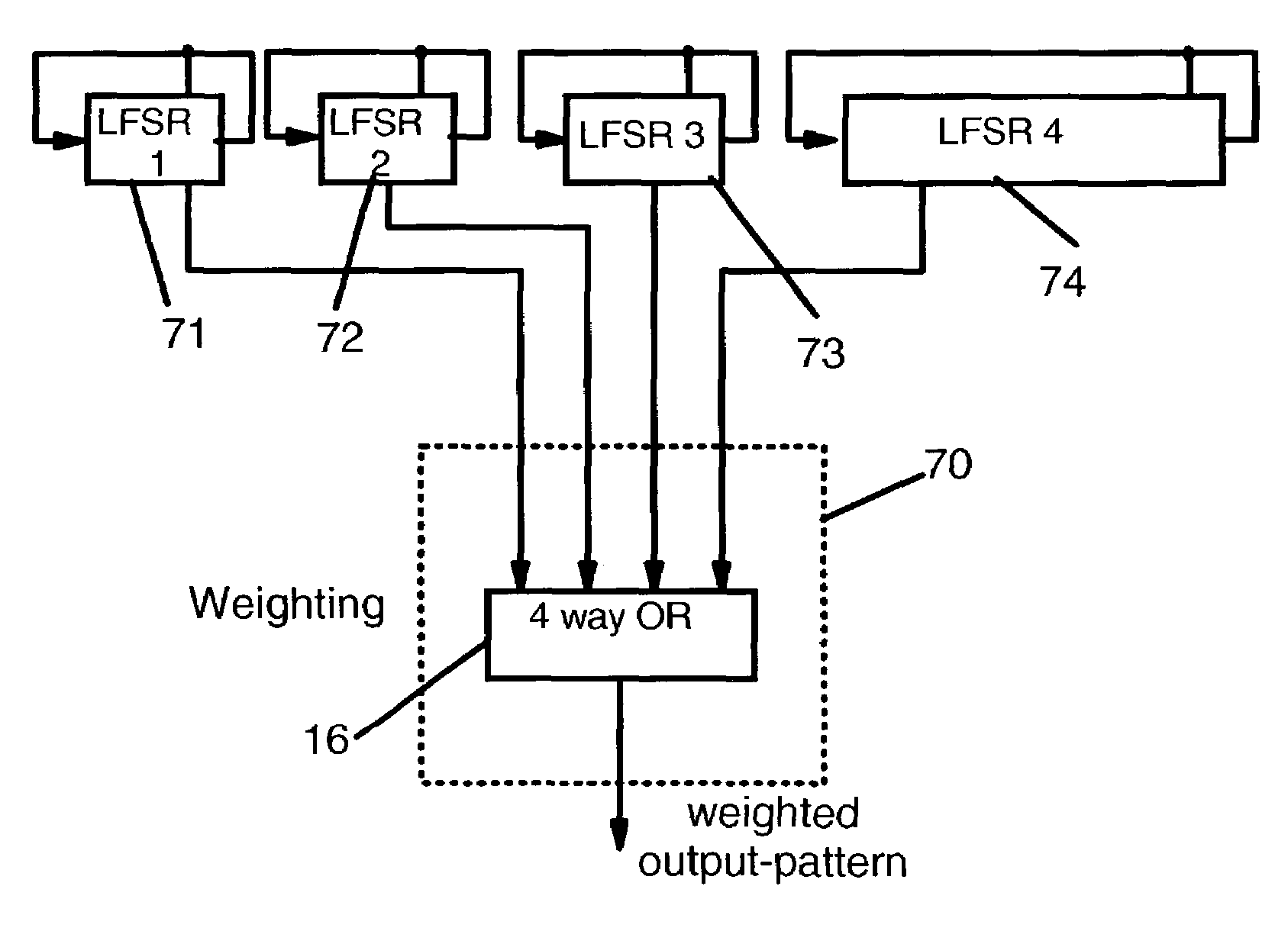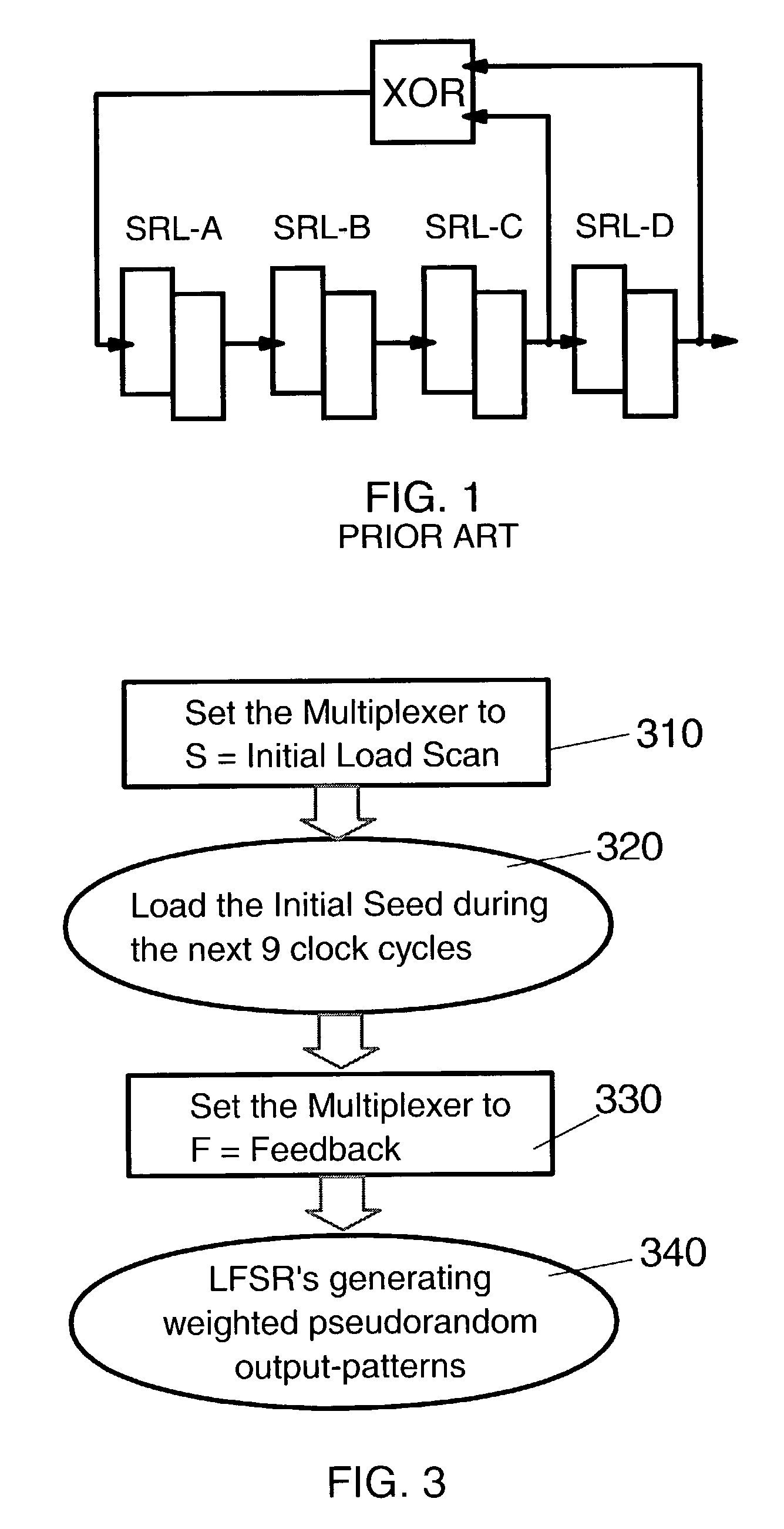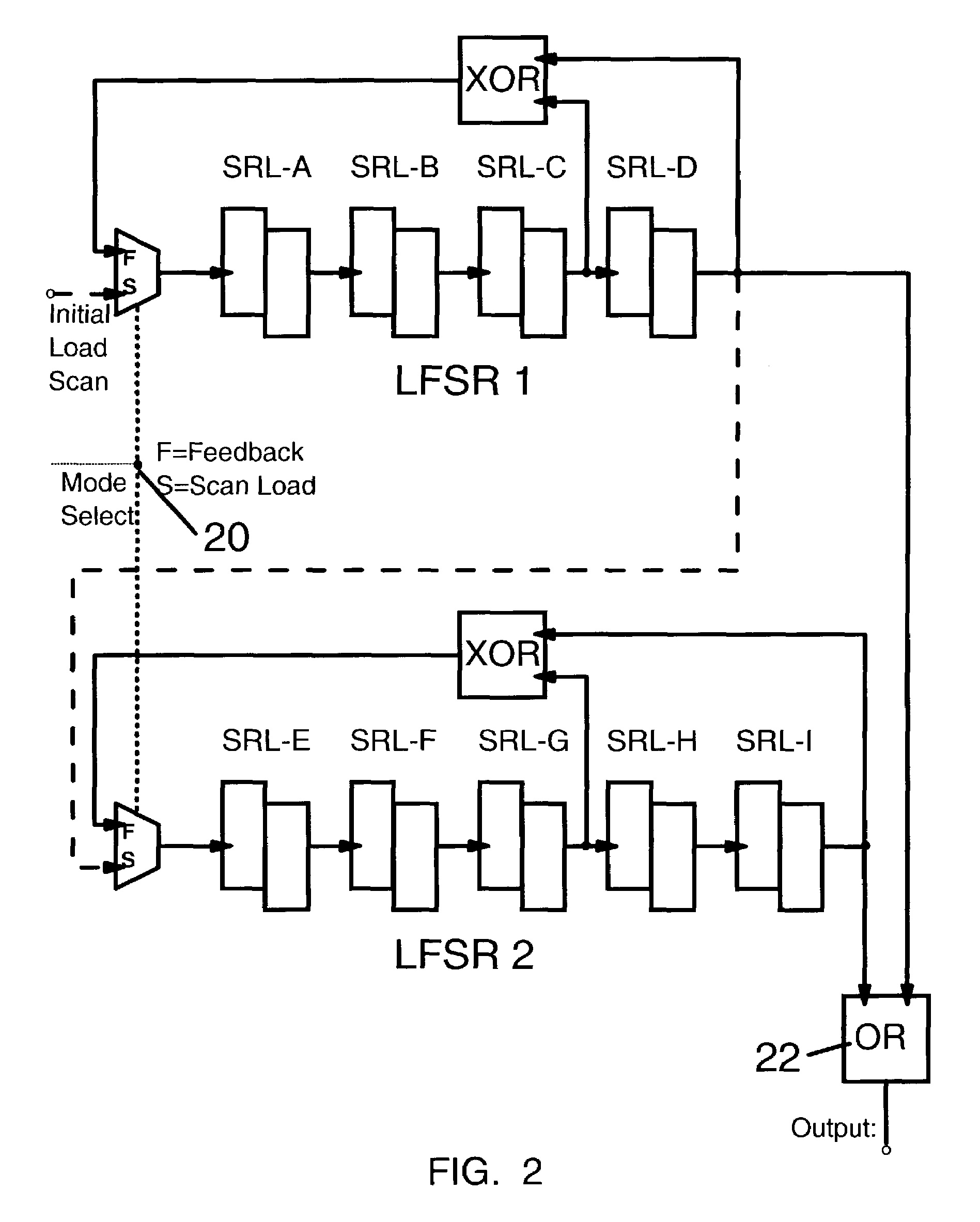Random pattern weight control by pseudo random bit pattern generator initialization
a random bit pattern and weight control technology, applied in the direction of pulse generation with predetermined statistical distribution, error detection/correction, instruments, etc., can solve the problems of large number of deterministic test patterns, need for self-testing technology, and large integrated circuit devices. achieve the effect of less chip area
- Summary
- Abstract
- Description
- Claims
- Application Information
AI Technical Summary
Benefits of technology
Problems solved by technology
Method used
Image
Examples
example
LFSR Configuration and Calculated Loops Counts
[0049]
LFSR 1 = 7 Bit,2{circumflex over ( )}7 − 1 = 127,127 = prime numberLFSR 2 = 9 Bit,2{circumflex over ( )}9 − 1 = 511,511 = 7 * 73LFSR 3 = 11 Bit,2{circumflex over ( )}11 − 1 = 2047,2047 = 23 * 89LFSR 4 = 34 Bit,2{circumflex over ( )}34 − 1 = 17179869183,17179869183 =3 * 43691 * 131071;
[0050]The total output-pattern count for this sample plurality of LFSRs is calculated as follows:
127*511*2047*17179869183 cycles=2.2822 E18 cycles.
[0051]In comparison to a single LFSR with the same number (61) of latches the pattern repeats after 2^61−1=2305843009213693951=2.3058 E18 cycles.
[0052]To switch the weighting from mostly ‘1’ to mostly ‘0’, an XOR-gate could be connected behind the OR-gate for building the complement of the output-pattern.
[0053]If one or more LFSRs is switched off by zero-state, the total output-pattern count is calculated as follows:
LFSR2, LFSR3 and LFSR4 running:
Total count=511*2047*17179869183=1.79704 E16
LFSR3 and LFSR4 ...
PUM
 Login to View More
Login to View More Abstract
Description
Claims
Application Information
 Login to View More
Login to View More - R&D
- Intellectual Property
- Life Sciences
- Materials
- Tech Scout
- Unparalleled Data Quality
- Higher Quality Content
- 60% Fewer Hallucinations
Browse by: Latest US Patents, China's latest patents, Technical Efficacy Thesaurus, Application Domain, Technology Topic, Popular Technical Reports.
© 2025 PatSnap. All rights reserved.Legal|Privacy policy|Modern Slavery Act Transparency Statement|Sitemap|About US| Contact US: help@patsnap.com



